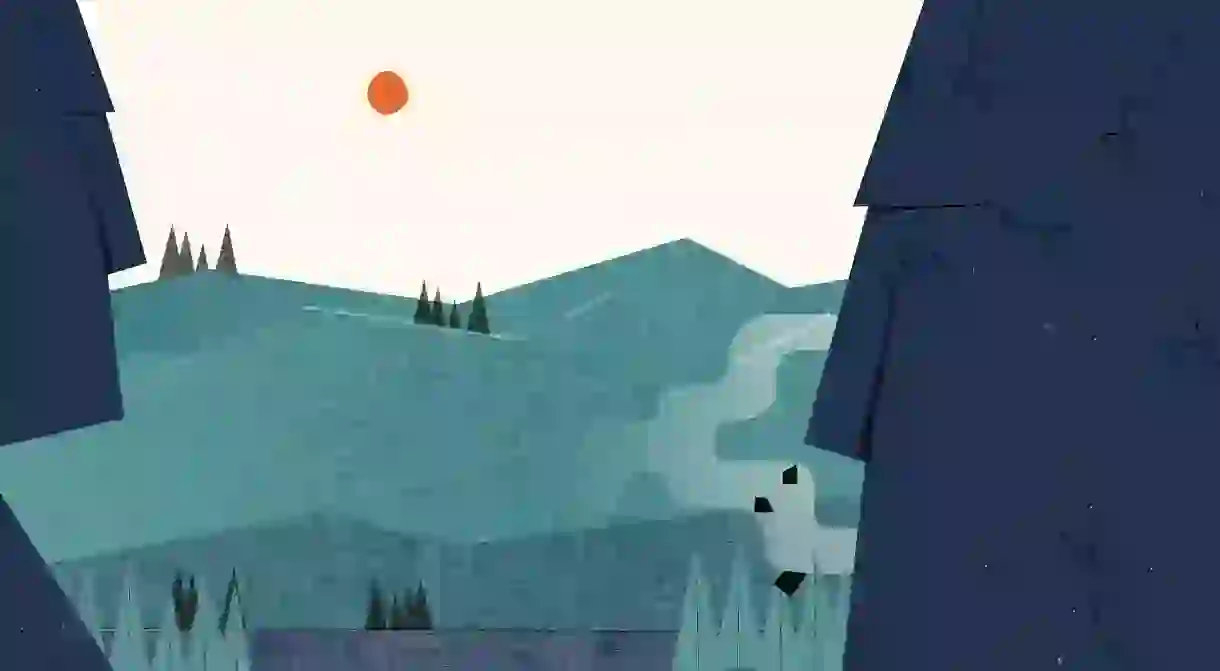11 Mythical Creatures Lurking in Finland's Lakes and Forests

The wide lakes and dense forests of Finland have always had a strong fascination and mysticism to those who live there and have inspired many mythological creatures and figures. Some of them are good natured, but others are best avoided at all costs. These are some of the most amazing creatures of the forests and waters in Finnish mythology to keep an eye out for.
Hiisi
In ancient mythology, Hiisi was a spirit who resided in wooded hills or groves, and among other things created horses and was commonly associated with hoofed animals. He was said to own an elk with 100 horns and a horse with a head of stone, a back made of wood, feet of iron, and a muzzle of fire. Christian missionaries interpreted Hiisi as a bad spirit, so he is now depicted as a monstrous creature who attacks travelers, steals from houses, and throws boulders into fields. This Hiisi is so infamous that the Finnish translations of Tolkien’s books re-named the goblins “hiisi.”

Haltija
Haltija are the Finnish equivalent of elves, brownies, or gnomes, and there are many different types throughout folklore. The tonttu are house elves, recognizable today as providing the inspiration for Santa’s elf helpers. Water haltija emerge from the sea, wear hats and boots made of stone, and can change their height at will. They are good spirits and can be summoned to help with tasks such as felling trees or curing illnesses caused by dirty water.

Will-o-wisps
These spirits, sometimes personified in Finnish mythology as the Lempo, usually appear as balls of light hovering over lakes. While they are rumored to lead the way to treasure, they are actually evil spirits who lead people to danger. Even today they are most commonly sighted around Finnish lakes during Midsummer.

Peikko
This is a fearsome creature similar to a giant, who can change size, turn invisible, sleep in the form of a rocky landscape for hundreds of years at a time, and even make holes in children’s teeth. This has influenced the peikko feared “boogeyman” type figures in Finnish mythology who kidnap wayward children.

Iku-Turso
Iku-Turso is a famous and fearsome creature in Finnish mythology, appearing in the Kalevala. He and his brethren, the Tursa, are somewhat similar to the Kraken or the Loch Ness monster, resembling a giant octopus and sometimes with dragon-like wings. Iku-Turso is such integral figure in Finnish mythology that he has had a submarine, video game characters, an asteroid, heavy metal bands, and a brand of ale named after him.

Keiju
A Finnish variety of a fairy or sprite, keiju are tiny and beautiful humanoid creatures with wings like those of a dragonfly or butterfly. They reside in forest ponds or misty meadows, usually in a parallel world, not unlike the pagan image of the fey. Like most other interpretations of fairies or fey, they are shy and avoid humans, but if encountered, they are friendly and love to dance.

Menninkäinen
The Finnish equivalent of a goblin or leprechaun bears an almost uncanny resemblance to Tolkien’s Hobbits (fitting as Tolkien was highly inspired by Finnish mythology). They are short, humanoid creatures who wear pointed hats, live underground, enjoy dancing and riddles, and seek out shiny treasure. Like the keiju, they are also shy and avoid humans, but sometimes wander into human habitation out of curiosity, and can be friendly if coaxed gently. Yet some are said to be mischievous and trick children into wandering deep into the forest.

Näkki
Näkki are water spirits who appear friendly and alluring before revealing their true monstrous forms. They lurk in murky bodies of water, usually under bridges or in wells, and lure in and drown careless children who swim out of their depth. Parents used the näkki as a warning to children not to wander alone near water. Another legend says that they rise from the waters on Midsummer’s night to join in the dancing, most likely to find more victims.

Otso
Bears play an incredibly important role in Finnish mythology, and there were once cults dedicated to worshipping them as gods. The Otso, or Kings of the Forests, are bear spirits who are treated as highly intelligent and divine beings. If a bear was killed, a ceremony was held to leave its skull in a sacred clearing with sacrificial gifts.

Tapio and Mielikki
Tapio and his wife Mielikki are the god and goddess of the forest, who hunters and farmers pray to in hopes of finding lots of game and protecting their livestock. Together they created many of Finland’s wild creatures, including the bear. Tapio is depicted as having a mossy beard and a hat made of twigs, while his wife is described as an incredibly beautiful woman, although she can be haggard and terrifying when she isn’t appeased. They live in a wooden castle deep in the forest where they watch over their wild animals.

Vedenemo
The “mother of waters” of the Karelia region resembles a mermaid, with the body of a fish and the torso and head of a human woman. Like a Greek siren, she sings and seduces humans into the murky depths. Fishermen used to offer their first catch to appease Vedenemo, and spotting her was regarded as an extremely bad omen.














